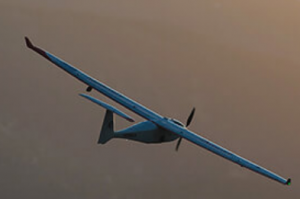Image – Drone America
Experiments in cloud seeding, the extremely scientific technique for modifying precipitation, are main the means in drone flights that may fly past visible line of sight (BVLOS ). In Nevada a analysis crew has recorded the longest unmanned, cross-country flight in Nevada historical past.
Flown at Hawthorne Industrial Airport below Nevada UAS Test Sites Certificate of Authorization (COA) and led by the Desert Research Institute (DRI) flight operations node, the Drone America Savant unmanned plane reached an altitude of 1,500 ft and accomplished a one-hour BVLOS flight masking a complete distance of 28 nautical miles on Wednesday, February 15, 2017.
The take a look at flight of the Savant cloud-seeding plane was the longest unmanned, cross-country flight in Nevada historical past.
Beyond Visual Line of Sight describes an aviation occasion during which the unmanned plane flies autonomously over a protracted distance. Flight crew members management and observe the plane in real-time utilizing computer-aided controls, however the pilot isn’t able to visually following the plane throughout flight with the bare eye.
“Today we demonstrated without a doubt that our unmanned cloud seeding technology and capabilities can move beyond line of sight – a significant hurdle in this industry,” mentioned Adam Watts, Ph.D., principal investigator on the venture and an assistant analysis professor at DRI. “Most importantly, we have done this safely and in following all FAA regulations and guidelines.”
For greater than a 12 months a DRI-led analysis crew, supported by the Nevada Governor’s Office of Economic Development by way of the Knowledge Fund, has been working to develop an unmanned cloud seeding plane able to serving to communities deal with the ongoing impacts of drought and discover modern options for natural-resource challenges resembling augmenting regional water provides. The analysis crew combines greater than 30 years of climate modification analysis and experience at DRI with the confirmed expertise in aerospace manufacturing and flight operations of Reno-based Drone America, and the business main unmanned aerial knowledge providers of Las Vegas-based AviSight.
“Reaching this milestone allows us to now focus on higher altitude, longer distance flights; as well as the extreme challenges of flying our advanced unmanned fixed-wing aircraft in the harsh, icy weather that come with optimal winter cloud-seeding conditions,” mentioned Mike Richards, President and CEO of Drone America.
The area operation was supported by a number of ground-based security officers and visible observers.
“Hawthorne offers an ideal location for BVLOS testing for both small and large UAS (greater than 55 pounds),” mentioned Chris Walach, Ph.D., Director of the FAA-designated Nevada UAS Test Site. “And, when combined with the NASA tested BVLOSdrone flights at one of the Nevada UAS Test Sites late last year, this again demonstrates Nevada’s foremost capability to lead and support the nation’s UAS industry and help advance BVLOS techniques and procedures that will eventually lead to safely integrating unmanned aircraft into the national airspace.”
 Unmanned Aerial Vehicle The latest drone news
Unmanned Aerial Vehicle The latest drone news




